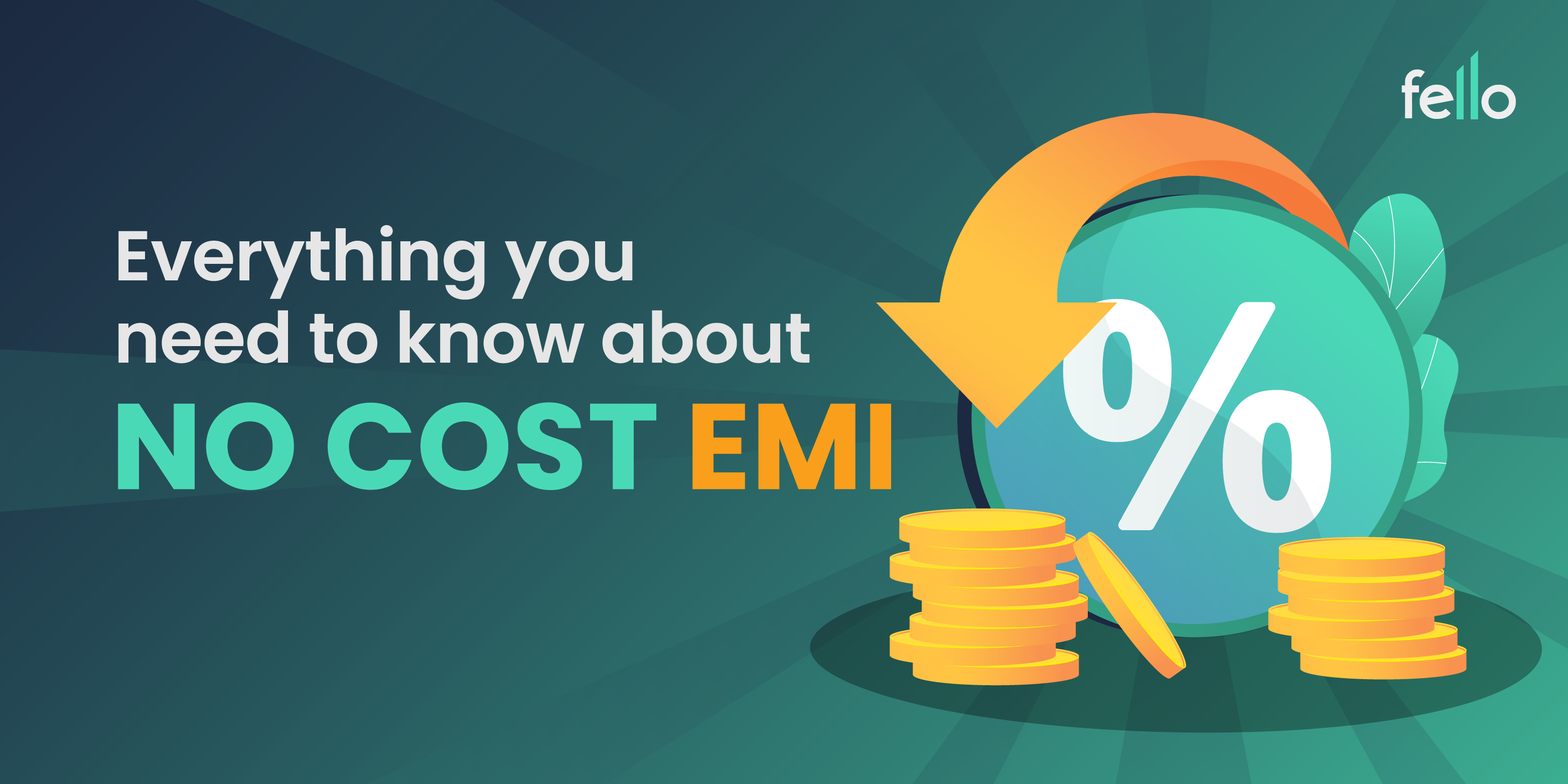Financial innovation has made life so much simpler. Whenever we wish to buy something but do not have the money, EMIs always come to our rescue. By breaking up the payment into smaller instalments, we ease the burden on our bank balance. Obviously, there’s a little extra that we end up paying in the form of interest. While no one likes hefty interest rates, the idea of not spending the entire paycheck at once is a huge relief. All of this changed a while ago when No-Cost EMI got introduced.
Gone are the days of sky-high interest rates and financing charges. No-Cost EMI is free. Or is it?
What is No-Cost EMI?
On the face of it, No-Cost EMI means that you have to pay no interest when you take a loan. Simply put, financing companies define it as a zero cost EMI for the cost of the product. This ensures that your purchase incurs no additional fees. Sounds great, right?
The purpose of these schemes is solely to help companies market their financial services to potential customers. However, after the Reserve Bank of India banned all 0% EMI schemes, financial companies found a workaround.
How exactly does No-Cost EMI work?
These schemes can work in two ways. Let us look at how both variations calculate the total cost and EMI amounts.
- The interest is equal to the discount — Suppose you want to buy a watch worth INR 10,000. The retailer gives you the option of availing a discount of INR 1,000 on purchasing upfront or using regular EMI payments where you pay 15% interest pa. On the other hand, he gives you the option of availing of a No-Cost EMI where you forgo the discount of INR 1,000 in exchange for paying 0 interest. In this manner, the discount forgone substitutes interest on EMI, because of which you end up paying the entire price of the product.
- Product cost is inclusive of interest — In this situation, the product gets listed with a markup in price inclusive of interest. Imagine that you only want to spend INR 10,000 on a product. You pay the whole amount upfront or opt for a No-Cost EMI scheme for INR 11,000. This markup in price includes the interest amount.
It is now clear that either way you look at it, the financer always charges interest in some form or the other. The term “no-cost” is thus nothing but a marketing gimmick to encourage the buyers to purchase more products on EMI. The more sales that take place through financing, the higher the finance provider’s revenue.
Advantages of No-Cost EMI
Equal Monthly Installments (EMI) is a financial innovation that aims to make financing readily available and easy to use for all kinds of customers. Similarly, No-Cost EMI also solves the same purpose while at the same time finding a way to work around RBI’s stance against zero cost EMIs.
- Improvement in affordability of purchase — Owing to the ever-increasing level of inflation and low incomes, consumers often find themselves straining their budgets. These ensure that even people from the middle class can purchase expensive items without blowing their budget.
- Availability across multiple platforms — These options are readily available on online and offline retailers. It makes availing of the service easier for everyone.
Disadvantages of No-Cost EMI
Like all other EMI schemes, No-Cost EMI suffers from the same limitations.
- Credit card requirement — Most No-Cost EMI schemes are only available to credit cardholders. Therefore, consumers who do not have credit cards cannot benefit from them.
- Non-repayment impacts credit score — If a consumer fails to repay their EMI dues on time, their credit score may get impacted. That means further complications when asking for loans.
Is No-Cost EMI really free?
The only difference between traditional EMI and No-Cost EMI is that with these EMIs, the interest charged is often hidden, because of which a consumer assumes that it is free. In reality, both forms of EMI extract interest in some form or the other from the consumers. In the end, traditional EMIs at discounted prices and No-Cost EMIs at list prices boil down to the same thing — the consumer is the only one who bears the cost.

